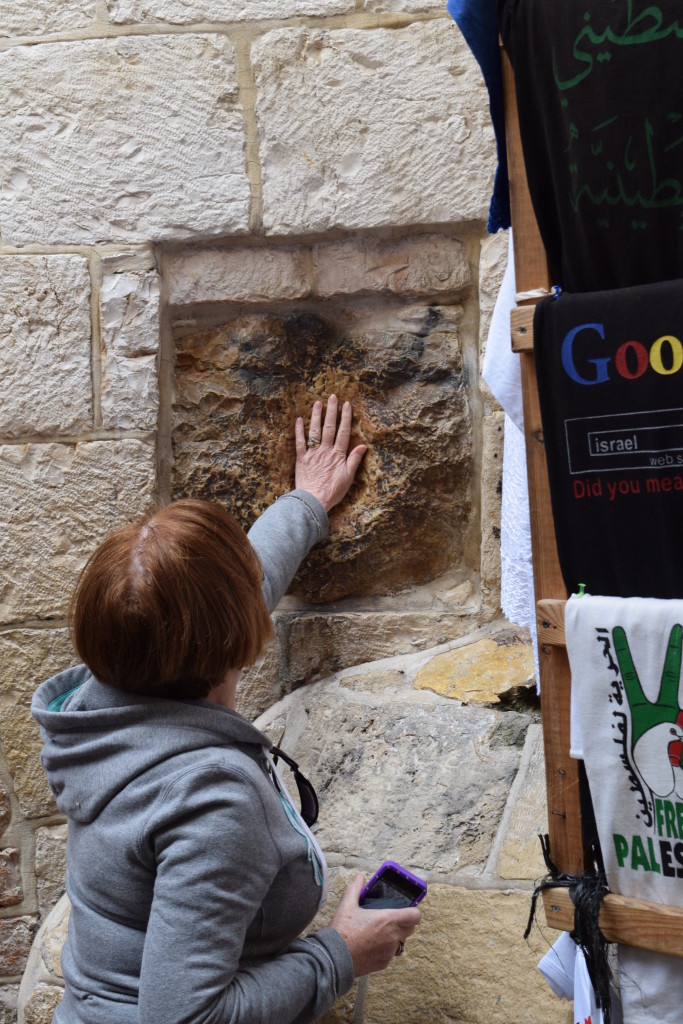And when they had mocked him, they took off the purple robe and put his own clothes on him. Then they led him out to crucify him.A certain man from Cyrene, Simon, the father of Alexander and Rufus, was passing by on his way in from the country, and they forced him to carry the cross. They brought Jesus to the place called Golgotha (which means “the place of the skull”). Then they offered him wine mixed with myrrh, but he did not take it. And they crucified him. Dividing up his clothes, they cast lots to see what each would get. It was nine in the morning when they crucified him.The written notice of the charge against him read: the king of the jews.
Mark 15:20-26
1,981 years ago Jesus of Nazareth was forced to walk these streets with a heavy burden. Wearing a crown made of thorns, and bleeding from a beating he had endured from the Roman soldiers, he carried on his shoulders a single plank of wood, destined to function as the horizontal member of the cross on which he was to die. It came from a tree harvested just over two kilometers away in what is today called the Valley of the Cross, in the new city of Jerusalem, under the shadow of the Israeli parliament, the Knesset.
The route leading from sentence to execution is debated by scholars and hinges on the answer to the question: where did Pontius Pilate, the Roman governor, try Jesus. Nevertheless, a case has been made that right here, several meters below these streets Jesus experienced part of his Passion, on his way to Golgotha, where he would be crucified. Today pilgrims trace Christ’s journey daily, along the 14 Stations of the Cross from his condemnation by Pontius Pilate to his burial in the Sepulcher (tomb) near Golgotha (Skull Hill).

